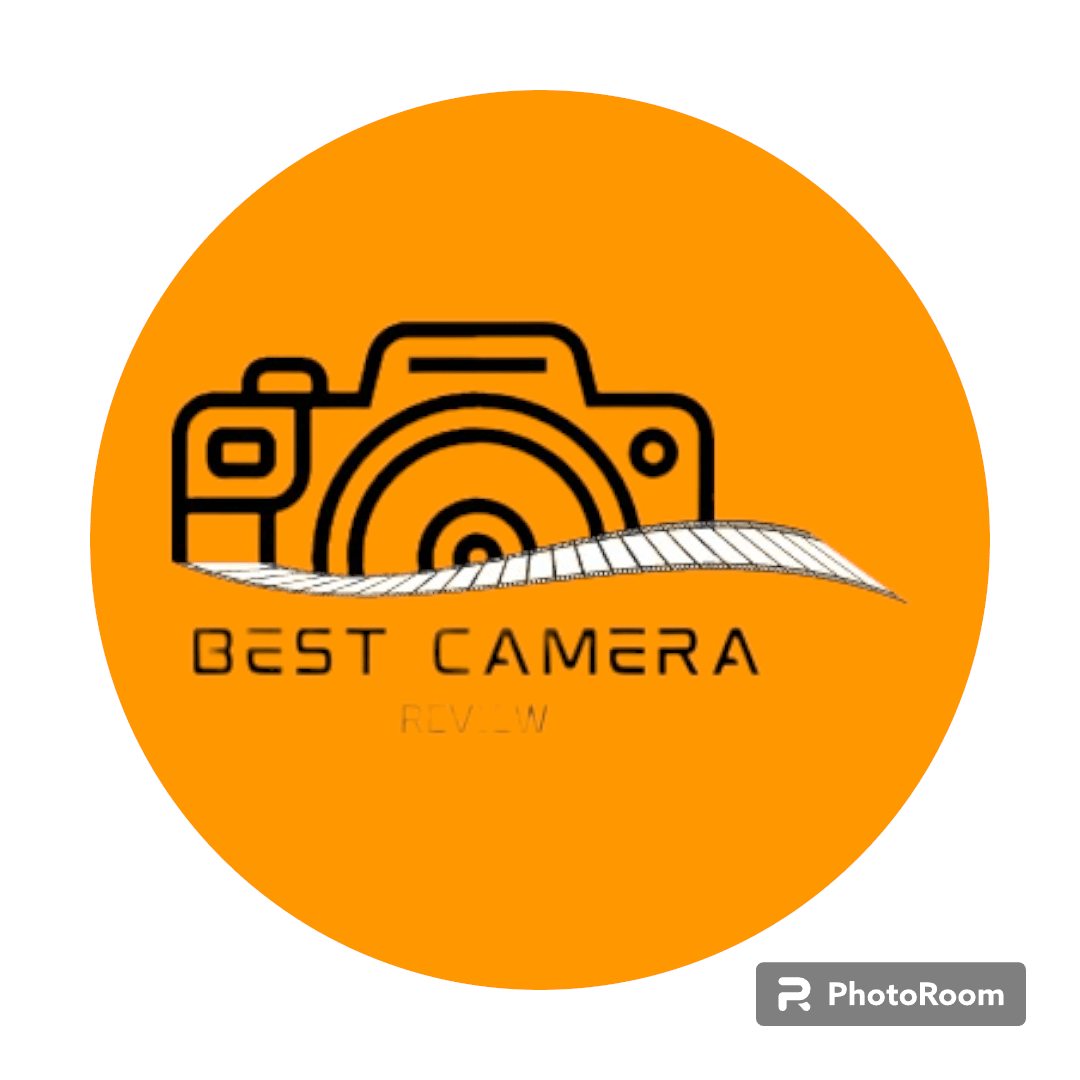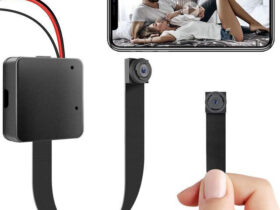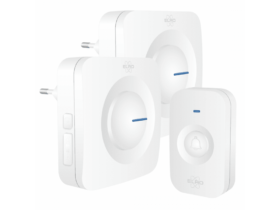Nikon 35mm Lens Showdown: f/1.4 vs. f/1.8 have always been associated with flexibility and therefore has been a favorite for any photographer, regardless of his specialty. What these lenses provide is a view that is slightly superior to human vision; they may be used for street, landscape, portraiture, and more. Of Nikon’s products, the f/1. 4 and f/1. The best 8 variations of the lens refer to the 35mm. All of them have their advantages and are tailored to the client’s tasks and the amounts of money they are ready to spend.
Importance of 35mm in Photography
Nikon 35mm Lens Showdown: f/1.4 vs. f/1.8 In the sphere of photography, there is probably no format that has left a lasting legacy as the 35mm film. Undoubtedly, the 35mm format enjoys immense popularity, simplicity, and a long-standing history of being people’s choice since the early days of photography’s development. It would be possible to track this format’s value through different aspects, starting from the purely technical contributions and ending with the influences on the culture and artwork.
Understanding Lens Specifications Nikon 35mm Lens Showdown: f/1.4 vs. f/1.8

What Does f/1.4 and f/1.8 Mean?
The f-number or f-stop, for example Nikon 35mm Lens Showdown: f/1.4 vs. f/1.8, that is the size of the diaphragm referred to as f-stop. Aperture is the hole within the camera lens which lets light get into the camera. Aperture is inversely proportional to the f-number; therefore, a low f-number implies a big aperture that collects more light to the camera sensor.
This can be especially useful in the low light and in those shots where you want the subject area to be in clear focus while the background is slightly out of focus. An f/1. 4 lens enables the entrance of more light than an f/1. 8 lens has made the photography quality even better than before since it offers more options in any kind of lighting and superb control of depth of field.
Aperture and Its Impact on Photography
The f-number or f-stop, for example Nikon 35mm Lens Showdown: f/1.4 vs. f/1.8 , that is the size of the diaphragm referred to as f-stop. Aperture is the hole within the camera lens which lets light get into the camera. Aperture is inversely proportional to the f-number; therefore, a low f-number implies a big aperture that collects more light to the camera sensor.
This can be especially useful in the low light and in those shots where you want the subject area to be in clear focus while the background is slightly out of focus. An f/1. 8 lens enables the entrance of more light than an f/1. 4 lens has made the photography quality even better than before since it offers more options in any kind of lighting and superb control of depth of field.
Build and Design Nikon 35mm Lens Showdown: f/1.4 vs. f/1.8
Build Quality of Nikon 35mm f/1.4
The Nikon 35mm Lens Showdown: f/1.4 is appreciated for its great craftsmanship of the lenses. It is made of a metallic material that gives it a firm and solid grip; it is a Nikon professional lens, and it provides that professional feeling. The construction of the lens is weather-sealed, thus it is safeguarded from dust and moisture and well-suited for shooting in harsh conditions is a big plus.
The focus ring is free of any notch or bump and has a clickless, but well-defined feel that is perfect for precision focusing, which is very important when shooting with f/1. 4 provides. The construction of the 35mm f/1 throughout the entire outlook of it hold a 46 degree angle. Designed to provide for professional use of the equipment, number 4 aims at enabling the shooting to be challenged
Build Quality of Nikon 35mm f/1.8
The Nikon 35mm Lens Showdown: f/1.8, are relatively cheaper when compared to the f/1. 4 counterpart, however, still provides good construction as a car. As in the case of the f/1, the construction of the lens comprises metals, but not as much as in the previous example. 4, the f/1. 8 is an aluminium and high quality plastic construction which at the same time cuts on the total weight without compromising on the solidity of the camera.
The focal ring are well-damped, characterized by a pleasant amount of resistance with smoothness, therefore, enabling the user to easily and accurately to manually focus the camera. It does not boast the weather sealing of the f/1. 4, the f/1. 8 is still capable of withstanding light rain and dust, so for most of your shooting scenarios, it still will do fine. Concerning the build quality of the Nikon 35mm f/1. 8 is good providing durability and reliability at a cheaper price as compared to the other laptops in the market
Weight and Portability
Concerning the weight and a possibility to throw it in a bag,Nikon 35mm Lens Showdown: f/1.4 vs. f/1.8 the clearly wins CG. It is considerably lighter than the f/1. 4 version, it is the most suitable for photographers who want to have light equipment no matter whether you are a travel photographer, or a photographer who prefers shooting on the streets, or in any other situation where it is convenient to have as less equipment as possible. It is also more portable,
which can be an advantage if shooting in hidden or documentary manner. The Nikon 35mm f/1. 4, even though it is bulkier allocates the expanded weight to better light gathering ability and solidity arguments to make it the go to option for professional users who emphasize on image quality rather than equipment size. However, for those who seek a compromise between the performance and manufacturing, the f/1. 8 is good enough in this regard.

Bokeh Characteristics of f/1. 4
At f/1 aperture level the lens produces a very bright and blazing picture on the screen. 4, it admits a lot of light hence, making the depth of field to be very shallow. This creates a very significantly large Bokeh, where the background seems to be painted with a layer of creamy smoothened blur. The out of focus areas are usually seen as big round circles and in most cases they are rather blurred. Bokeh at f/1. 4 is usually deemed highly desirable, indeed transitions between the ‘in-focus’ and ‘out-of-focus’ are relatively smooth to the human eye.
Bokeh characteristics of f/1.eight
Nikon 35mm Lens Showdown: f/1.4 vs. f/1.8 At f/1.8, at the same time as the depth of field is still shallow, it is barely deeper as compared to f/1.four. This results in a bokeh that is less suggested but still smooth and aesthetically appealing. The highlights in the background may seem smaller and greater defined than at f/1.4, but the usual bokeh pleasant remains tender. The distinction between f/1.four and f/1.eight bokeh is diffused, with f/1.8 regularly being preferred for a balance between bokeh quality and intensity of subject manage.
Table of Contents
Image Quality Nikon 35mm Lens Showdown: f/1.4 vs. f/1.8

colour reproduction
Nikon 35mm Lens Showdown: f/1.4 vs. f/1.8 shade reproduction is a important element of photograph fine, reflecting how correctly a lens or digital camera sensor can seize and show the proper hues of a scene. A top notch lens need to deliver colourful, natural colorations with out introducing undesirable tints or colour shifts. in particular, lenses with excellent colour reproduction maintain the subtle colours and gradients in pix, that is in particular critical for shooting practical pores and skin tones, landscapes, and items with elaborate colour info.
Advanced coatings on lens factors can decorate shade fidelity, minimizing chromatic aberration and other distortions that could degrade shade accuracy.
contrast and Micro-contrast
Assessment refers to the distinction between the darkest and brightest parts of an photo. high evaluation allows for sharp, well-described edges and a extra dynamic photo general, at the same time as low comparison could make an photo seem flat or dull. Micro-contrast,Nikon 35mm Lens Showdown: f/1.4 vs. f/1.8 a finer component of contrast, includes the ability to seize diffused variations in tone inside small info.
A lens with splendid micro-comparison will render textures and first-class info with readability, bringing out the nuances in shadows and highlights. that is essential for photography genres such as portraiture and macro pictures, where detail and depth make a full-size difference in photo pleasant.
Flare and Ghosting Resistance Nikon 35mm Lens Showdown: f/1.4 vs. f/1.8
Flare and ghosting are optical phenomena that occur whilst brilliant light resources, which includes the solar or streetlights, mirror off a lens’s internal elements, developing unwanted artifacts in an image. Flare commonly appears as a hazy glow, whilst ghosting manifests as vibrant spots or “ghost” images. great lenses are designed with advanced coatings and optical designs that decrease those results, ensuring clear and sharp pix even in difficult lighting conditions.
Flare and ghosting resistance are mainly important in outside images and in situations with sturdy backlighting, where controlling mild artifacts is vital to keeping image integrity.
Low mild overall performance

f/1.four in Low light
Nikon 35mm Lens Showdown: f/1.4 vs. f/1.8 Lenses with an f/1.four aperture excel in low-mild conditions, making an allowance for more light consumption. This outcomes in brighter snap shots with reduced noise, even in tough lights environments. The shallow depth of area created by the huge aperture also adds a pleasing bokeh effect, isolating topics superbly towards blurred backgrounds.
f/1.8 in Low Light
while now not as huge as f/1.four, an f/1.eight aperture still plays admirably in low mild. It strikes a stability between permitting sufficient light for clean snap shots and offering a moderately shallow depth of subject. This aperture is frequently discovered in extra inexpensive lenses, making it a popular choice for photographers in search of desirable low-light overall performance with out breaking the financial institution Nikon 35mm Lens Showdown: f/1.4 vs. f/1.8.
The following is the list of 35mm Nikon lens price :
Nikon 35mm Lens Showdown: f/1.4
Price Range: Up to $1,500; Up to $1,800 USD
Nikon 35mm Lens Showdown: f/1.4
Price Range: Supplementary, the market price of Intel remains high, between $ 500 to $ 600 USD.
Autofocus Performance Nikon 35mm Lens Showdown: f/1.4 vs. f/1.8
Autofocus Performance
Comparing the autofocus speed with other lenses, it is possible to state that the Nikon 35mm Lens Showdown: f/1.4 vs. f/1.8. eight lenses are famous, but they address various requirements. The f/1. 8 lens is faster in terms of focusing and this has boosted the<|reserved_special_token_270|>’s reputation. Because the light elements of subsequent designs are less massive, and it was built more recently, this lens generally focuses faster than the f/1. 4 counterpart.
Considering the fact that this lens is aimed at photographers who work in the streets, ceremonies or any environment that requires fast and portable shooting, the f/1. 8’s faster response time, which enables the subjects to freeze in place and be documented within a shorter time span Nikon 35mm Lens Showdown: f/1.4 vs. f/1.8.
Accuracy and Consistency
As far as the accuracy and the reproducibility of these values are concerned, the f/1. 4 lens is in fact a better view personally as well as holds an upper hand. It also has a larger area for the collecting of light to go to the AF sensors that produces better focusing, especially on low contrast objects. This lens is normally used in different professional fulfillments, focusing the items effectively even when working with the f/1. 4, where again the depth of field is almost non-existent.
Nikon 35mm Lens Showdown: f/1.4 vs. f/1.8, however, is slightly inconsistent sometimes in very low light or high contrast situations which is why it is very competent. Still, in normal lighting conditions, it is rather accurate, but for some reason, it does not hunt for focus very often. The f/1. Being rather stable at different lighting conditions, 8 should be suitable for everyday use, and the desire for greater accuracy can be sacrificed in favor of shooting speed for photographers.
De-noising of Autofocus Motors
Auto focus motor noise can be quite significant, especially when using the equipment for events that require a lot of stealth such as weddings or video recording. The Nikon 35mm Lens Showdown: f/1.4 vs. f/1.8. Features such as the incorporation of a smaller ND filter for video, a silent autofocus motor that becomes less distracting while in use, and others are observed in the 8 lens. This aspect of the camera being fairly unobtrusive is beneficial to photographers who do not want to be seen or videographers who wish to have sound without interference.
On the other hand the , Obviously,Nikon 35mm Lens Showdown: f/1.4 vs. f/1.8 ,4 makes slightly more sound when focusing compared to other models but is by no means too loud. This is thanks to the older, stronger motor that drives focusing mechanism within the camera. The noise can be heard quite clearly all the time and perhaps especially in rather quiet surroundings which could be an issue for some types of occupations. However, to the photographers that desire better image quality and are okay with the little noise, the f/1. 4 could therefore be maintained a serious contender.
Nikon 35mm Lens Showdown: f/1.4 vs. f/1.8 – Frequently Asked Questions (FAQs)
What are the primary differences between the nikon 35mm lens showdown: f/1.4 vs. f/1.8 ?
the primary variations lie in aperture length, weight, fee, and occasional-light overall performance. The f/1.four lens has a much wider aperture, allowing greater light, which improves low-mild performance and creates a more suggested bokeh effect. however, it’s miles commonly heavier and greater luxurious than the f/1.eight lens, which is lighter, extra compact, and extra low-priced even as nonetheless handing over solid performance.
Which lens is higher for low-mild photography?
The Nikon 35mm Lens Showdown: f/1.4 vs. f/1.8 is superior for low-mild photography due to its wider aperture, which allows extra light to hit the sensor. This outcomes in brighter images with much less noise and higher common picture high-quality in dim conditions as compared to the f/1.eight lens.
How does the bokeh examine between the 2 lenses?
Nikon 35mm Lens Showdown: f/1.4 vs. f/1.8. The f/1.four lens produces a creamier, greater suggested bokeh due to its wider aperture, which creates a shallower depth of discipline. The f/1.8 lens additionally produces beautiful bokeh, however it is barely much less extreme and not as smooth because the f/1.4.
Is the f/1.four lens worth the greater fee?
whether or not the f/1.4 lens is really worth the greater cost depends for your specific wishes. in case you prioritize low-light overall performance, extraordinary bokeh, and build exceptional, the f/1.four lens is a worthwhile funding. however, in case you’re looking for a greater finances-pleasant option that also grants amazing image nice, the f/1.8 lens is a extremely good opportunity Nikon 35mm Lens Showdown: f/1.4 vs. f/1.8.
How do the sizes and weights of those lenses evaluate?
Nikon 35mm Lens Showdown: f/1.4 vs. f/1.8.The f/1.4 lens is typically larger and heavier than the f/1.8 lens because of its extra complex optical design and wider aperture. The f/1.8 lens is extra compact and light-weight, making it easier to hold round for prolonged durations, which may be a bonus for road or tour images.
Can both lenses be used on complete-body and APS-C Nikon cameras?
yes, each the Nikon 35mm f/1.4 and f/1.eight lenses can be used on complete-body (FX) and APS-C (DX) Nikon cameras. however, whilst used on APS-C cameras, the effective focal period can be approximately fifty two.5mm, that’s toward a wellknown lens area of view.
conclusion
To sum up, it is necessary to state that for the moment it is rather difficult to decide which of the two lenses – Nikon 35mm Lens Showdown: f/1.4 vs. f/1.8 vary depending on the requirements of the buyer and the amount of money s/he is willing to spend. The f/1. 4 has better low light capacity, bokeh and build than 3 which makes it more preferable if one is to shoot professionally and doesn’t mind the extra cost of the best equipment.
However, the f/1. 8 lens offers top quality at a much lower price and smaller size offering it as an ideal model for enthusiasts or as a second lens for professionals that require a fast, lightweight, inexpensive, and high performing prime lens. International photographers should note that each of these lenses possesses certain advantages and it is up to everyone to determine which of them is appropriate according to the style of shooting and priorities.













okey dear thanks
WOW